Hongwei Zhao
Accelerating Data Generation for Nonlinear temporal PDEs via homologous perturbation in solution space
Oct 24, 2025Abstract:Data-driven deep learning methods like neural operators have advanced in solving nonlinear temporal partial differential equations (PDEs). However, these methods require large quantities of solution pairs\u2014the solution functions and right-hand sides (RHS) of the equations. These pairs are typically generated via traditional numerical methods, which need thousands of time steps iterations far more than the dozens required for training, creating heavy computational and temporal overheads. To address these challenges, we propose a novel data generation algorithm, called HOmologous Perturbation in Solution Space (HOPSS), which directly generates training datasets with fewer time steps rather than following the traditional approach of generating large time steps datasets. This algorithm simultaneously accelerates dataset generation and preserves the approximate precision required for model training. Specifically, we first obtain a set of base solution functions from a reliable solver, usually with thousands of time steps, and then align them in time steps with training datasets by downsampling. Subsequently, we propose a "homologous perturbation" approach: by combining two solution functions (one as the primary function, the other as a homologous perturbation term scaled by a small scalar) with random noise, we efficiently generate comparable-precision PDE data points. Finally, using these data points, we compute the variation in the original equation's RHS to form new solution pairs. Theoretical and experimental results show HOPSS lowers time complexity. For example, on the Navier-Stokes equation, it generates 10,000 samples in approximately 10% of traditional methods' time, with comparable model training performance.
Single Document Image Highlight Removal via A Large-Scale Real-World Dataset and A Location-Aware Network
Apr 19, 2025Abstract:Reflective documents often suffer from specular highlights under ambient lighting, severely hindering text readability and degrading overall visual quality. Although recent deep learning methods show promise in highlight removal, they remain suboptimal for document images, primarily due to the lack of dedicated datasets and tailored architectural designs. To tackle these challenges, we present DocHR14K, a large-scale real-world dataset comprising 14,902 high-resolution image pairs across six document categories and various lighting conditions. To the best of our knowledge, this is the first high-resolution dataset for document highlight removal that captures a wide range of real-world lighting conditions. Additionally, motivated by the observation that the residual map between highlighted and clean images naturally reveals the spatial structure of highlight regions, we propose a simple yet effective Highlight Location Prior (HLP) to estimate highlight masks without human annotations. Building on this prior, we present the Location-Aware Laplacian Pyramid Highlight Removal Network (L2HRNet), which effectively removes highlights by leveraging estimated priors and incorporates diffusion module to restore details. Extensive experiments demonstrate that DocHR14K improves highlight removal under diverse lighting conditions. Our L2HRNet achieves state-of-the-art performance across three benchmark datasets, including a 5.01\% increase in PSNR and a 13.17\% reduction in RMSE on DocHR14K.
M3oE: Multi-Domain Multi-Task Mixture-of Experts Recommendation Framework
Apr 29, 2024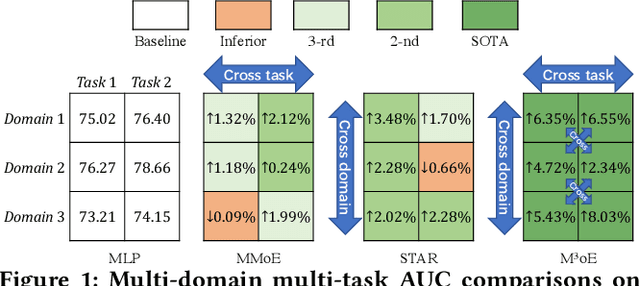

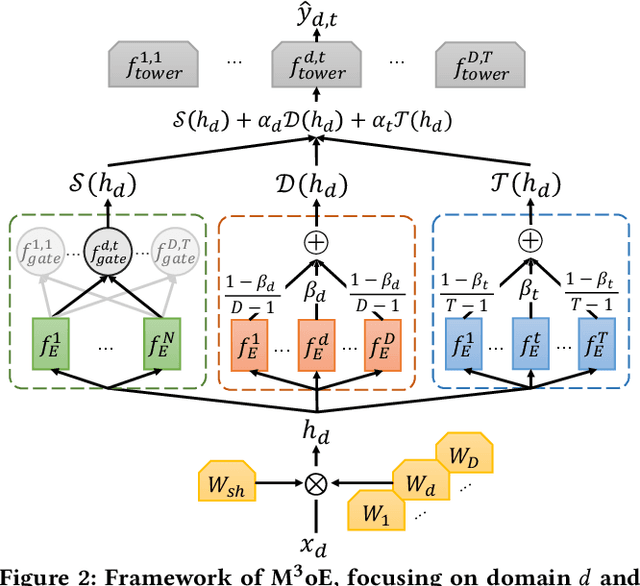
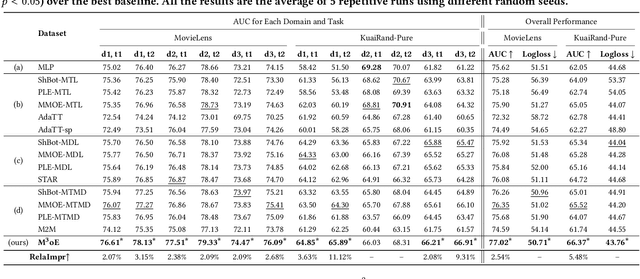
Abstract:Multi-domain recommendation and multi-task recommendation have demonstrated their effectiveness in leveraging common information from different domains and objectives for comprehensive user modeling. Nonetheless, the practical recommendation usually faces multiple domains and tasks simultaneously, which cannot be well-addressed by current methods. To this end, we introduce M3oE, an adaptive multi-domain multi-task mixture-of-experts recommendation framework. M3oE integrates multi-domain information, maps knowledge across domains and tasks, and optimizes multiple objectives. We leverage three mixture-of-experts modules to learn common, domain-aspect, and task-aspect user preferences respectively to address the complex dependencies among multiple domains and tasks in a disentangled manner. Additionally, we design a two-level fusion mechanism for precise control over feature extraction and fusion across diverse domains and tasks. The framework's adaptability is further enhanced by applying AutoML technique, which allows dynamic structure optimization. To the best of the authors' knowledge, our M3oE is the first effort to solve multi-domain multi-task recommendation self-adaptively. Extensive experiments on two benchmark datasets against diverse baselines demonstrate M3oE's superior performance. The implementation code is available to ensure reproducibility.
MLPST: MLP is All You Need for Spatio-Temporal Prediction
Sep 23, 2023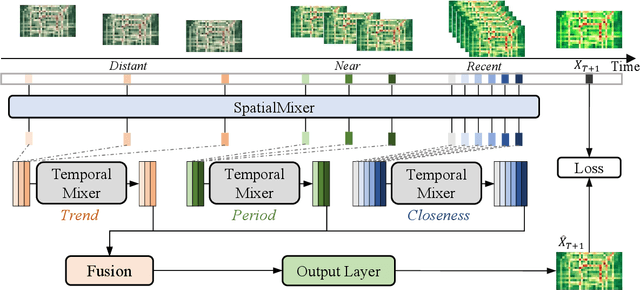
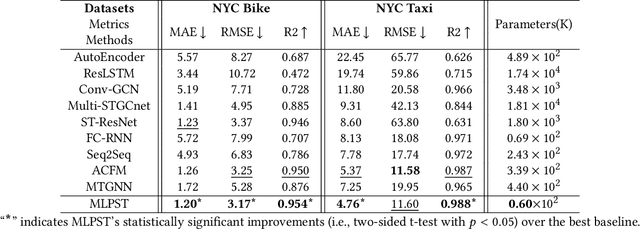
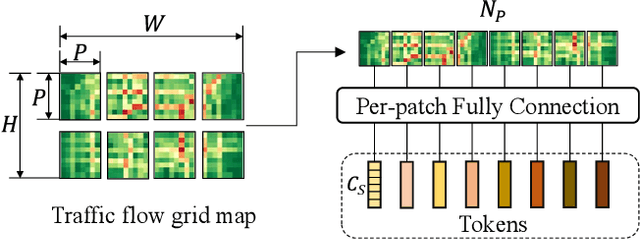
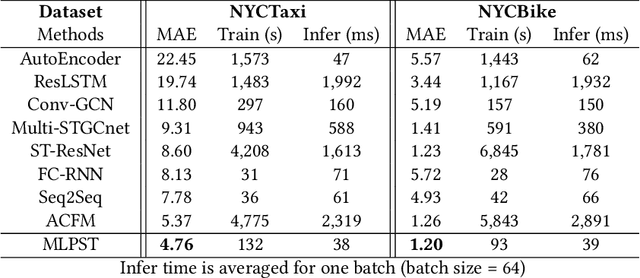
Abstract:Traffic prediction is a typical spatio-temporal data mining task and has great significance to the public transportation system. Considering the demand for its grand application, we recognize key factors for an ideal spatio-temporal prediction method: efficient, lightweight, and effective. However, the current deep model-based spatio-temporal prediction solutions generally own intricate architectures with cumbersome optimization, which can hardly meet these expectations. To accomplish the above goals, we propose an intuitive and novel framework, MLPST, a pure multi-layer perceptron architecture for traffic prediction. Specifically, we first capture spatial relationships from both local and global receptive fields. Then, temporal dependencies in different intervals are comprehensively considered. Through compact and swift MLP processing, MLPST can well capture the spatial and temporal dependencies while requiring only linear computational complexity, as well as model parameters that are more than an order of magnitude lower than baselines. Extensive experiments validated the superior effectiveness and efficiency of MLPST against advanced baselines, and among models with optimal accuracy, MLPST achieves the best time and space efficiency.
Rethinking Sensors Modeling: Hierarchical Information Enhanced Traffic Forecasting
Sep 20, 2023

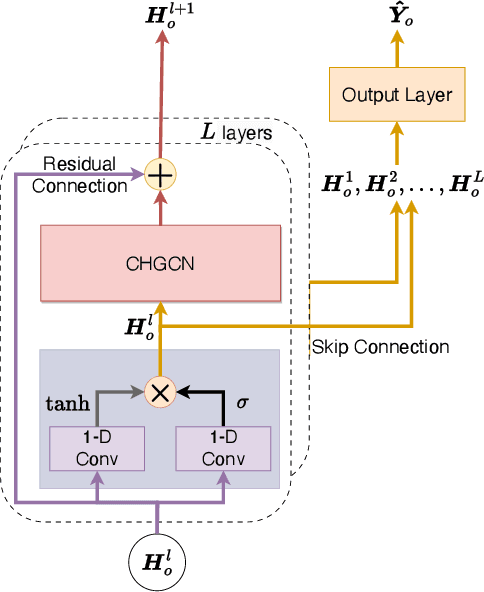

Abstract:With the acceleration of urbanization, traffic forecasting has become an essential role in smart city construction. In the context of spatio-temporal prediction, the key lies in how to model the dependencies of sensors. However, existing works basically only consider the micro relationships between sensors, where the sensors are treated equally, and their macroscopic dependencies are neglected. In this paper, we argue to rethink the sensor's dependency modeling from two hierarchies: regional and global perspectives. Particularly, we merge original sensors with high intra-region correlation as a region node to preserve the inter-region dependency. Then, we generate representative and common spatio-temporal patterns as global nodes to reflect a global dependency between sensors and provide auxiliary information for spatio-temporal dependency learning. In pursuit of the generality and reality of node representations, we incorporate a Meta GCN to calibrate the regional and global nodes in the physical data space. Furthermore, we devise the cross-hierarchy graph convolution to propagate information from different hierarchies. In a nutshell, we propose a Hierarchical Information Enhanced Spatio-Temporal prediction method, HIEST, to create and utilize the regional dependency and common spatio-temporal patterns. Extensive experiments have verified the leading performance of our HIEST against state-of-the-art baselines. We publicize the code to ease reproducibility.
PromptST: Prompt-Enhanced Spatio-Temporal Multi-Attribute Prediction
Sep 18, 2023Abstract:In the era of information explosion, spatio-temporal data mining serves as a critical part of urban management. Considering the various fields demanding attention, e.g., traffic state, human activity, and social event, predicting multiple spatio-temporal attributes simultaneously can alleviate regulatory pressure and foster smart city construction. However, current research can not handle the spatio-temporal multi-attribute prediction well due to the complex relationships between diverse attributes. The key challenge lies in how to address the common spatio-temporal patterns while tackling their distinctions. In this paper, we propose an effective solution for spatio-temporal multi-attribute prediction, PromptST. We devise a spatio-temporal transformer and a parameter-sharing training scheme to address the common knowledge among different spatio-temporal attributes. Then, we elaborate a spatio-temporal prompt tuning strategy to fit the specific attributes in a lightweight manner. Through the pretrain and prompt tuning phases, our PromptST is able to enhance the specific spatio-temoral characteristic capture by prompting the backbone model to fit the specific target attribute while maintaining the learned common knowledge. Extensive experiments on real-world datasets verify that our PromptST attains state-of-the-art performance. Furthermore, we also prove PromptST owns good transferability on unseen spatio-temporal attributes, which brings promising application potential in urban computing. The implementation code is available to ease reproducibility.
AutoSTL: Automated Spatio-Temporal Multi-Task Learning
Apr 16, 2023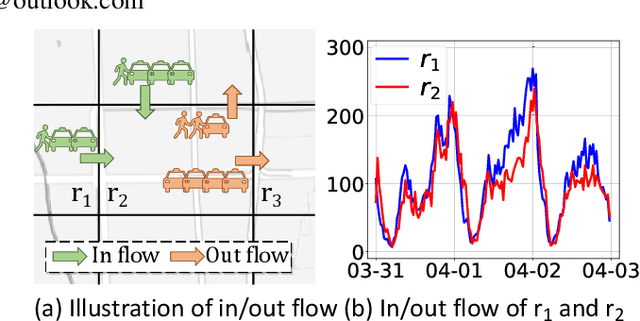

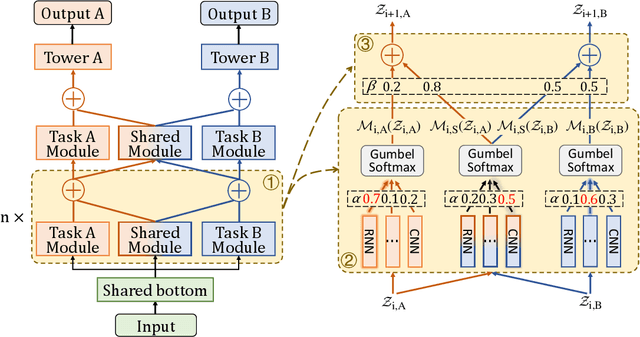
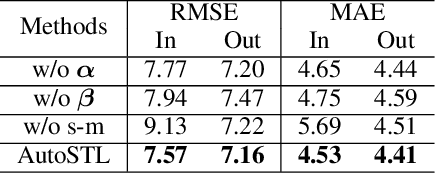
Abstract:Spatio-Temporal prediction plays a critical role in smart city construction. Jointly modeling multiple spatio-temporal tasks can further promote an intelligent city life by integrating their inseparable relationship. However, existing studies fail to address this joint learning problem well, which generally solve tasks individually or a fixed task combination. The challenges lie in the tangled relation between different properties, the demand for supporting flexible combinations of tasks and the complex spatio-temporal dependency. To cope with the problems above, we propose an Automated Spatio-Temporal multi-task Learning (AutoSTL) method to handle multiple spatio-temporal tasks jointly. Firstly, we propose a scalable architecture consisting of advanced spatio-temporal operations to exploit the complicated dependency. Shared modules and feature fusion mechanism are incorporated to further capture the intrinsic relationship between tasks. Furthermore, our model automatically allocates the operations and fusion weight. Extensive experiments on benchmark datasets verified that our model achieves state-of-the-art performance. As we can know, AutoSTL is the first automated spatio-temporal multi-task learning method.
T2M-GPT: Generating Human Motion from Textual Descriptions with Discrete Representations
Jan 18, 2023



Abstract:In this work, we investigate a simple and must-known conditional generative framework based on Vector Quantised-Variational AutoEncoder (VQ-VAE) and Generative Pre-trained Transformer (GPT) for human motion generation from textural descriptions. We show that a simple CNN-based VQ-VAE with commonly used training recipes (EMA and Code Reset) allows us to obtain high-quality discrete representations. For GPT, we incorporate a simple corruption strategy during the training to alleviate training-testing discrepancy. Despite its simplicity, our T2M-GPT shows better performance than competitive approaches, including recent diffusion-based approaches. For example, on HumanML3D, which is currently the largest dataset, we achieve comparable performance on the consistency between text and generated motion (R-Precision), but with FID 0.116 largely outperforming MotionDiffuse of 0.630. Additionally, we conduct analyses on HumanML3D and observe that the dataset size is a limitation of our approach. Our work suggests that VQ-VAE still remains a competitive approach for human motion generation.
Region-level Contrastive and Consistency Learning for Semi-Supervised Semantic Segmentation
Apr 28, 2022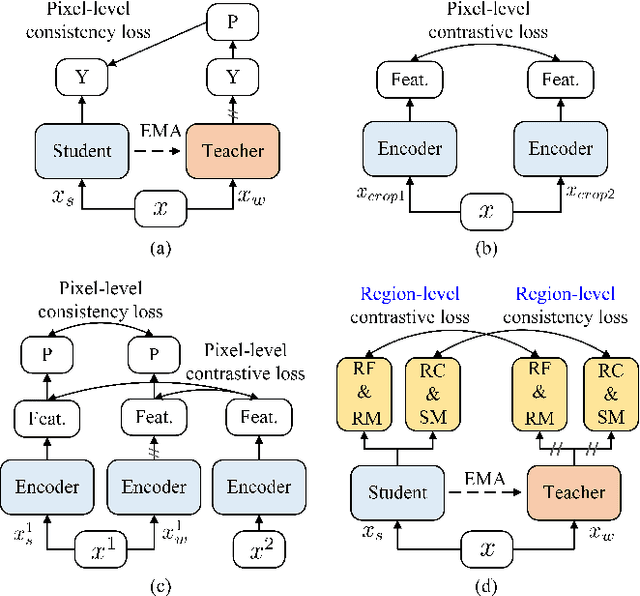

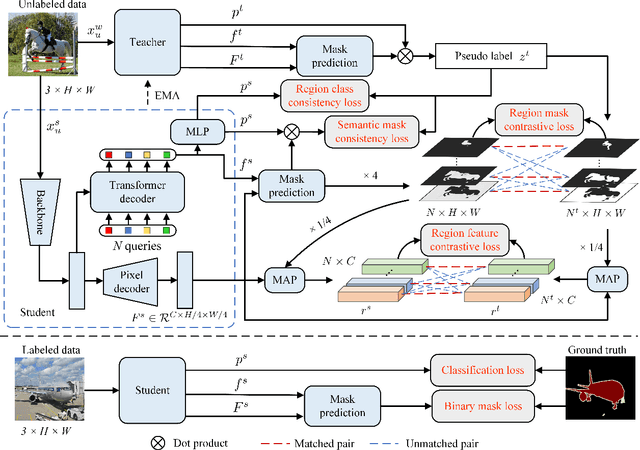
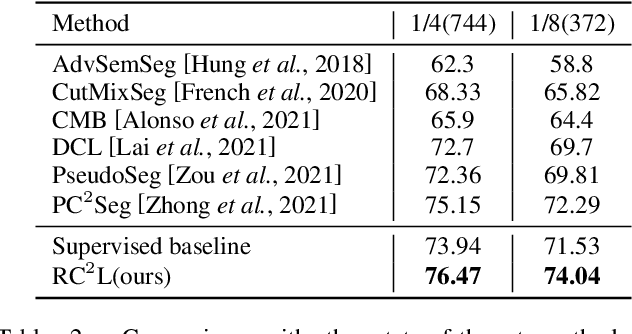
Abstract:Current semi-supervised semantic segmentation methods mainly focus on designing pixel-level consistency and contrastive regularization. However, pixel-level regularization is sensitive to noise from pixels with incorrect predictions, and pixel-level contrastive regularization has memory and computational cost with O(pixel_num^2). To address the issues, we propose a novel region-level contrastive and consistency learning framework (RC^2L) for semi-supervised semantic segmentation. Specifically, we first propose a Region Mask Contrastive (RMC) loss and a Region Feature Contrastive (RFC) loss to accomplish region-level contrastive property. Furthermore, Region Class Consistency (RCC) loss and Semantic Mask Consistency (SMC) loss are proposed for achieving region-level consistency. Based on the proposed region-level contrastive and consistency regularization, we develop a region-level contrastive and consistency learning framework (RC^2L) for semi-supervised semantic segmentation, and evaluate our RC$^2$L on two challenging benchmarks (PASCAL VOC 2012 and Cityscapes), outperforming the state-of-the-art.
W-net: Simultaneous segmentation of multi-anatomical retinal structures using a multi-task deep neural network
Jun 11, 2020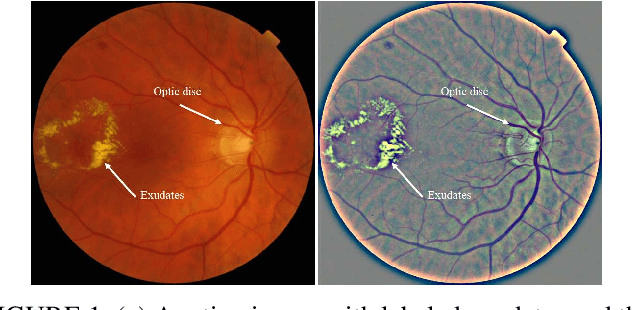
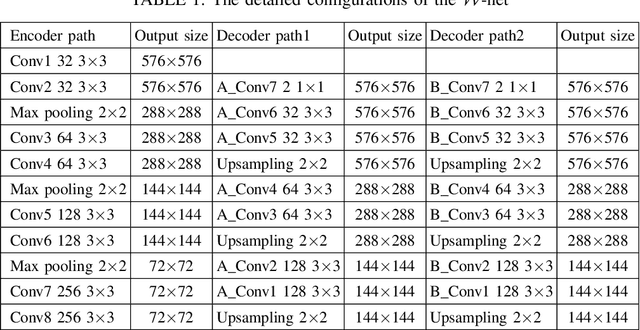
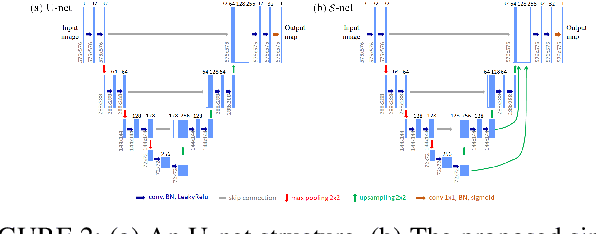
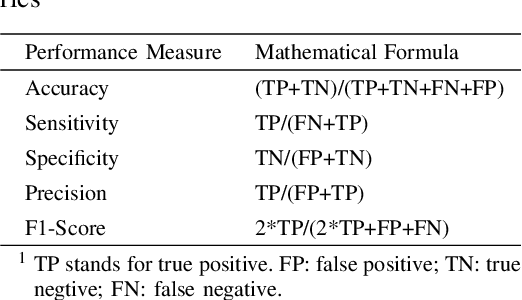
Abstract:Segmentation of multiple anatomical structures is of great importance in medical image analysis. In this study, we proposed a $\mathcal{W}$-net to simultaneously segment both the optic disc (OD) and the exudates in retinal images based on the multi-task learning (MTL) scheme. We introduced a class-balanced loss and a multi-task weighted loss to alleviate the imbalanced problem and to improve the robustness and generalization property of the $\mathcal{W}$-net. We demonstrated the effectiveness of our approach by applying five-fold cross-validation experiments on two public datasets e\_ophtha\_EX and DiaRetDb1. We achieved F1-score of 94.76\% and 95.73\% for OD segmentation, and 92.80\% and 94.14\% for exudates segmentation. To further prove the generalization property of the proposed method, we applied the trained model on the DRIONS-DB dataset for OD segmentation and on the MESSIDOR dataset for exudate segmentation. Our results demonstrated that by choosing the optimal weights of each task, the MTL based $\mathcal{W}$-net outperformed separate models trained individually on each task. Code and pre-trained models will be available at: \url{https://github.com/FundusResearch/MTL_for_OD_and_exudates.git}.
 Add to Chrome
Add to Chrome Add to Firefox
Add to Firefox Add to Edge
Add to Edge